Irrigation optimization
Optimize water consumption!
T-Irrigate is an AI-based irrigation optimization solution that enables farmers to execute
their irrigation activities with the right amount, at the right time.
Optimize water consumption!
T-Irrigate is an AI-based irrigation optimization solution that enables farmers to execute their irrigation activities with the right amount, at the right time.

Focusing on “water and root” data, field-specific critical water thresholds are calculated

Raw agricultural data collected from soil moisture & temperature sensors positioned in the field are transferred into the AI Platform

The data is then transformed into relevant information through the application of Algorithms and Artificial Intelligence
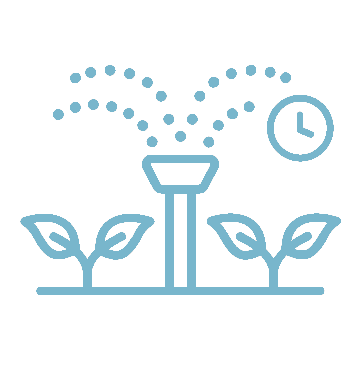
specified levels
Irrigation Optimization Sensors
-
Soil Moisture & Temperature
Irrigation in the right amount at the right time by measuring soil moisture and temperature with sensors placed at different depths beneath the ground
-
Soil Moisture & Temperature & EC
Precise fertigation decisions measuring soil salinity levels, together with soil moisture and temperature data
-
Flowmeter
Flow rate passing through the irrigation line, along with the irrigation start and cut-off times
-
Water Pressure Sensor
Swiftly addressing potential pressure issues by real-time water pressure data during active irrigation
-
Rainfall
Accurate measurement of the rainfall quantity in the fields where pivot and sprinkler irrigation systems are placed
-
Ultrasonic Flowmeter
Using sound waves to measure the flow on irrigation pipes within pivot irrigation systems
-
Leaf Wetness & Canopy Temperature
Leaf surface wetness caused by dew, rainfall, or spray irrigation measurement
-
Weather
Using air temperature data for precise identification of the required irrigation amount for the field and detecting potential frost risks
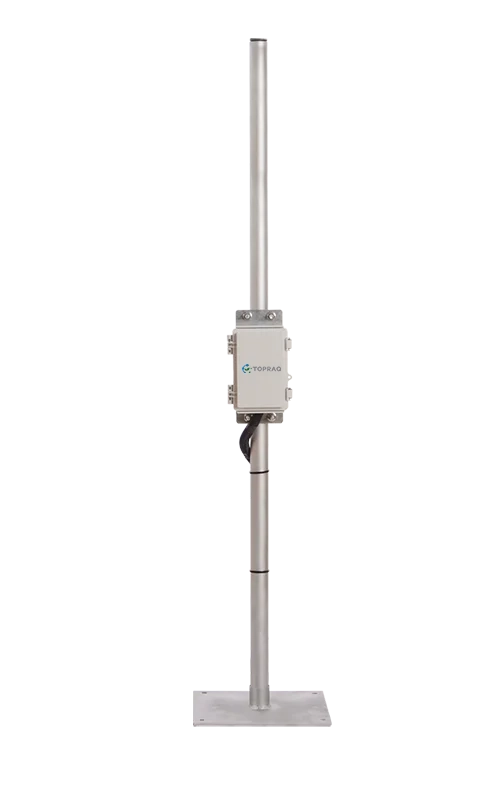


Solar Panel
T-Brain
Flowmeter
Soil Moisture & Temperature
Soil Moisture & Temperature & EC
Let's Talk - Share Your Contact Information!
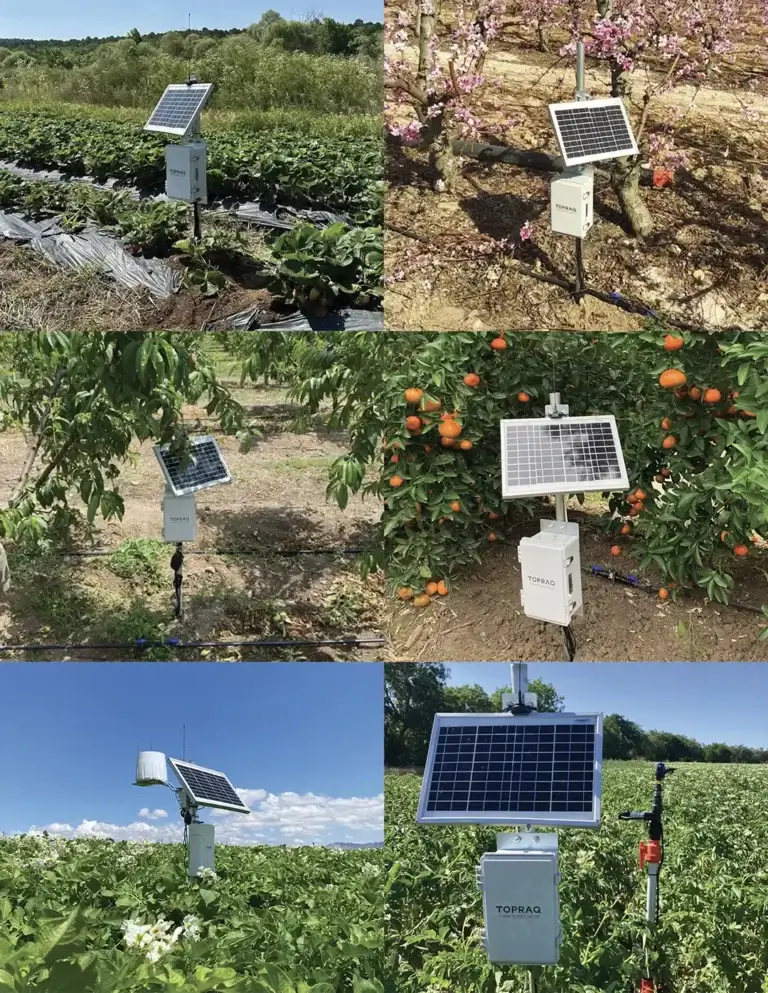
Advantages of T-Irrigate
We feed soil sensor and T-Weather data into our AI Platform, and calculate critical field water thresholds keeping huge focus on “water and root” data.
- Our primary differences;
- Detailed information about what’s happening on under the ground
- Field managers and farm owners have full visibility into their fields with real time data
- Minimizing employee mistakes
- Input optimization
- Preventing waste of valuable water and other resources (fertilizer, labor, etc.)
- Electricity saving
- Ensure sustainability in agriculture
T-Irrigate Packages
We custom-tailor our T-Irrigate installments to match the specific production type,
crop, and irrigation infrastructure of our farmers.
We custom-tailor our T-Irrigate installments to match the specific production type, crop, and irrigation infrastructure of our farmers.
Empowering farmers to make informed irrigation decisions and optimize input costs by strategically placing sensors at various levels, enabling control over pressurized irrigation methods such as Drip, Pivot, and Sprinkler.
-
4 Soil Moisture & Temperature sensors
under the emitter - Flowmeter
- EC Sensor (Optional)
We enable farmers using drip irrigation to observe the underground spread and infiltration of water.
Our sensors, strategically positioned beneath individual emitters and between emitter pairs, promote the efficient use of water, enhancing overall effectiveness.
- 4 Soil moisture and temperature sensors under the emitter
- 2 Soil moisture and temperature sensors between emitter pairs
- Flowmeter
- EC Sensor (Optional)
We enable our farmers to execute pivot irrigation more consciously and effectively, incorporating various sensors such as Rainfall, Water Pressure, Ultrasonic Flowmeter, and GPS to pivot irrigation systems.
- Homogenous Rainfall Irrigation Monitoring
- Pressure Data of Main Valve and Span End
- Soil Moisture and Temperature
- Tonnage Data with Ultrasonic Flowmeter
- Location Tracking with GPS
Placing Water Pressure Sensors on critical points over the irrigation line, we enable farmers to take prompt action.
- Real-time water pressure data during active irrigation
- Setting alarms for predetermined pressure levels
- Instant intervention to possible pressure problems
Accessing detailed information about your irrigation activities has never been easier!
Through the interpretation of sensor data using Artificial Intelligence and Algorithms, our farmers now have the opportunity to oversee and manage crucial irrigation information. Parameters such as:
・Irrigation Start Level,
・Irrigation Cut-Off Level,
・Root Zone Moisture Index,
・Soil Temperature,
・Soil Moisture,
・Flow Rate,
・Irrigation Duration,
・Water Pressure
All are specifically tailored to the field and crops. These parameters can easily be monitored from user screens.
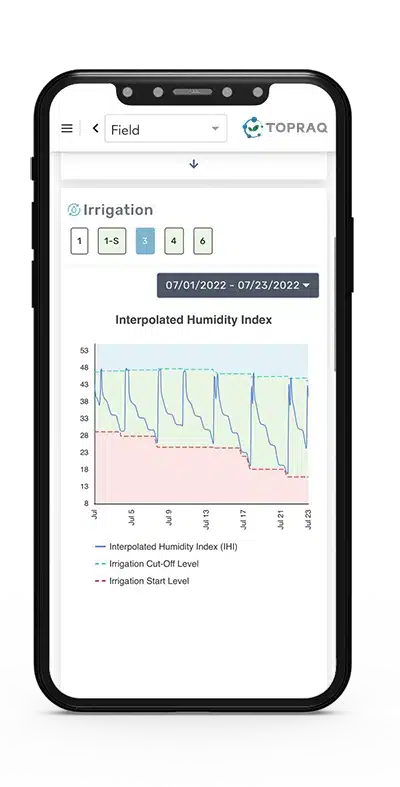
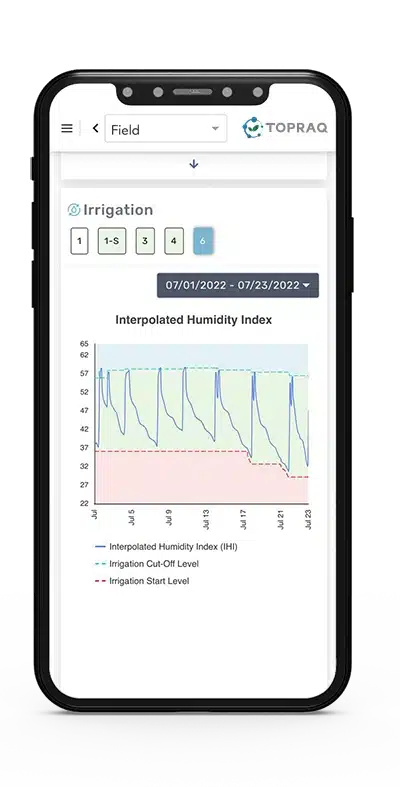
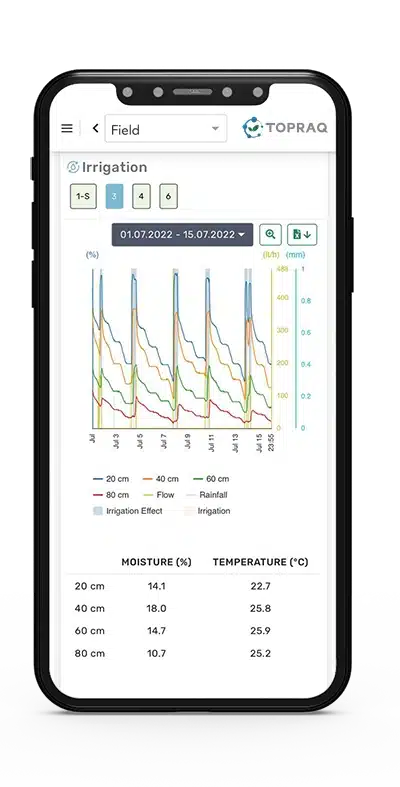



Receive real-time and scheduled field data directly to your mobile phone through our Smart Assistant!
PHENOLOGICAL CAMERA
Remote monitoring of phenological development
stages of plants via real-time images
By incorporating the Phenological Camera Sensor, which can be seamlessly integrated into existing stations or placed independently, we offer farmers the capability to remotely monitor and control the phenological development stages of plants.
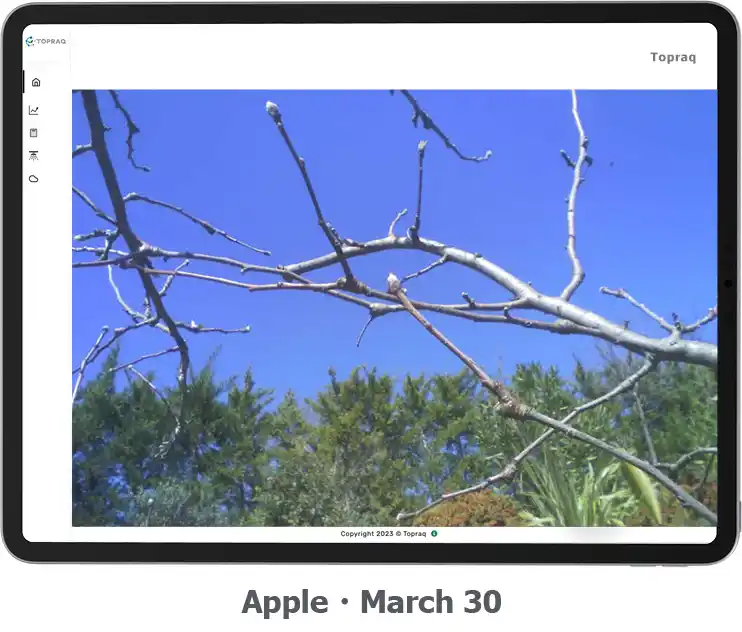
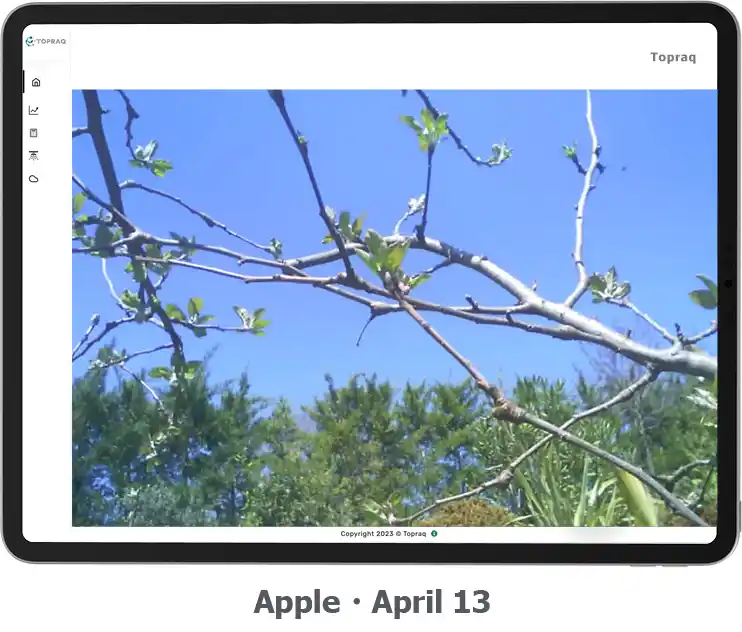
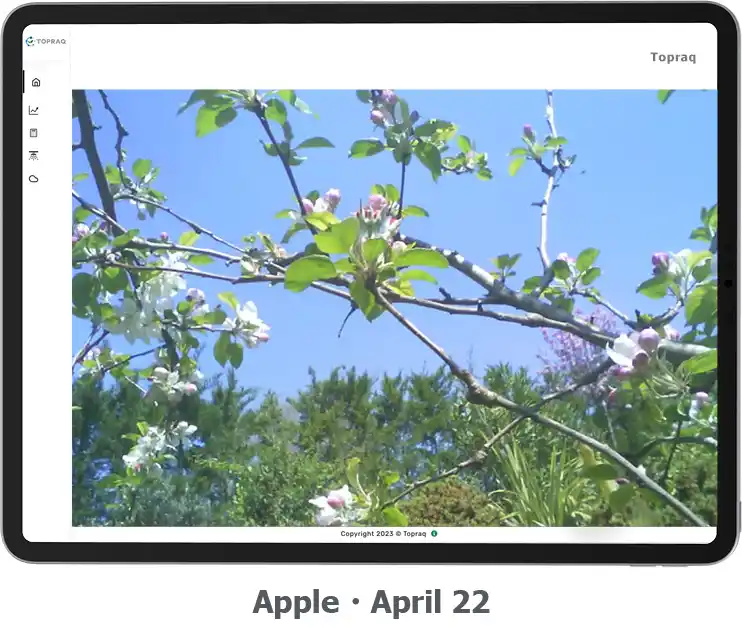
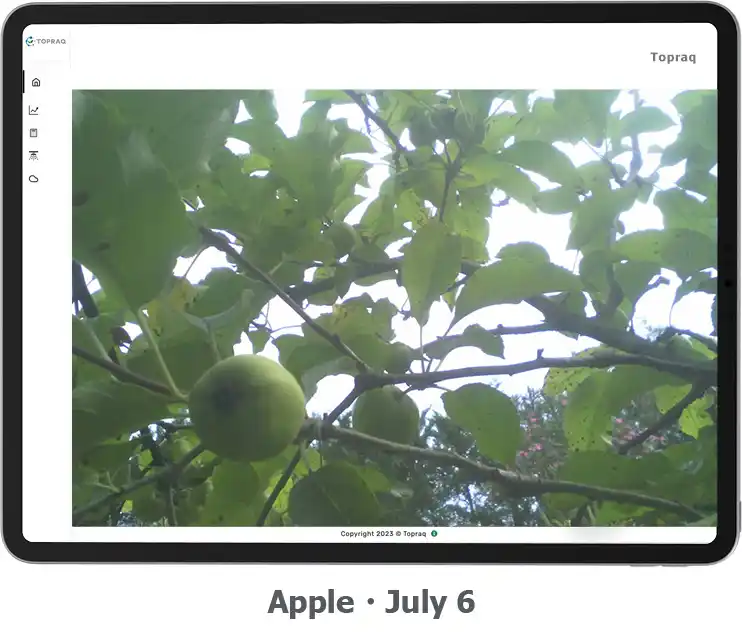
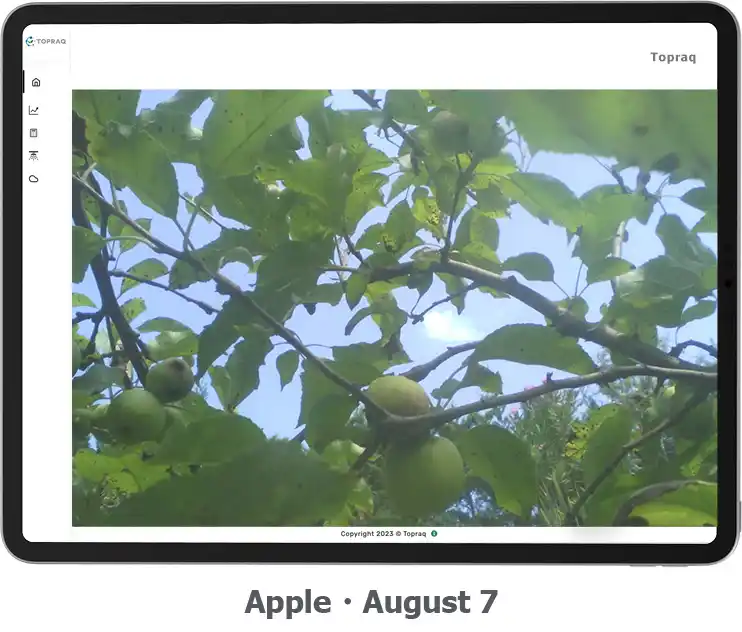
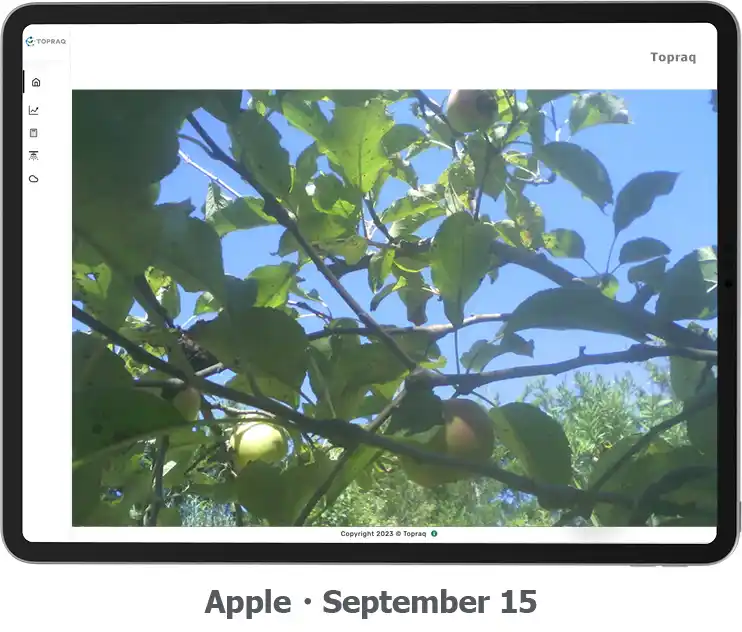
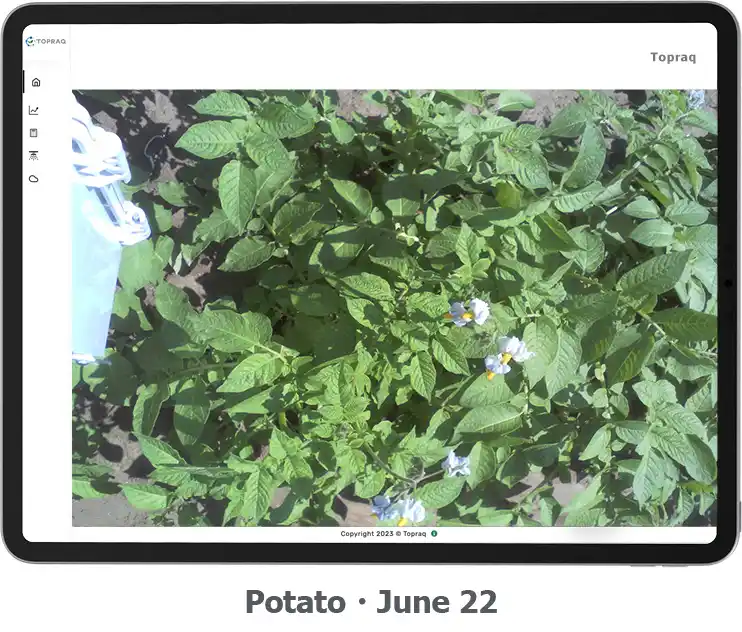
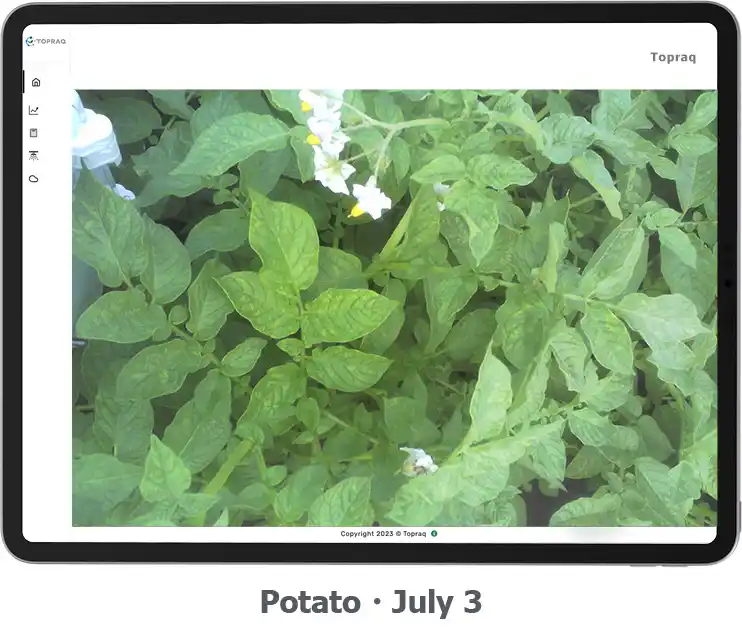
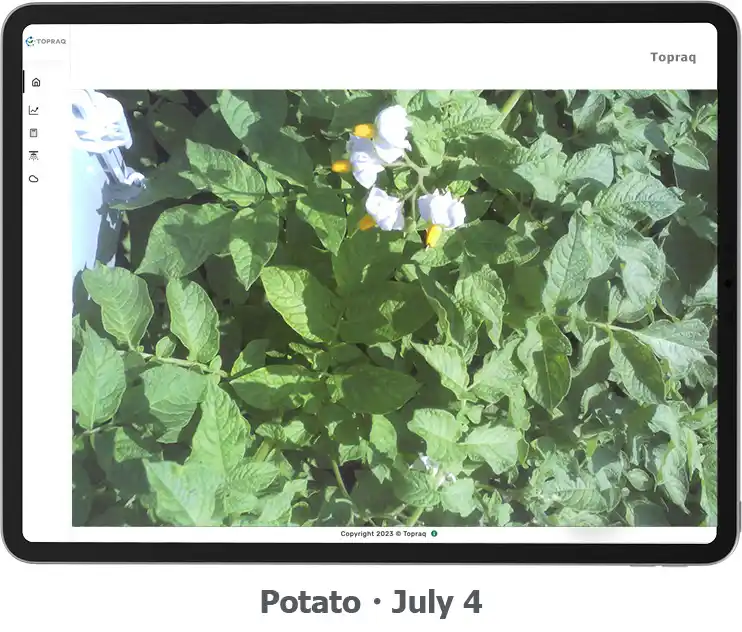
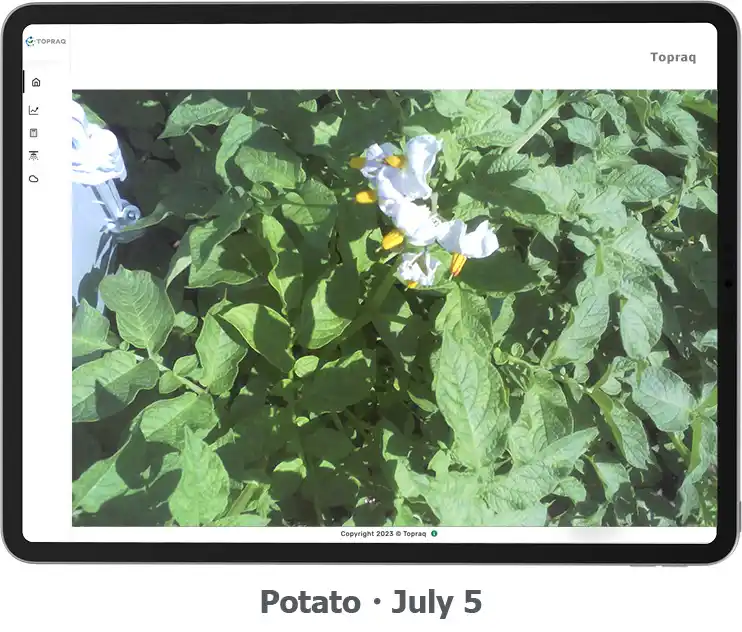
development stages of plants
via real-time images
By incorporating the Phenological Camera Sensor, which can be seamlessly integrated into existing stations or placed independently, we offer farmers the capability to remotely monitor and control the phenological development stages of plants.











What is Irrigation Optimization?
Irrigation optimization is a technique that combines real-time data from soil moisture sensors and weather forecasts to fine-tune water delivery to crops. This approach minimizes water waste, reduces costs, and promotes sustainable practices by supporting efficient use of water resources.

What are Irrigation Optimization Solutions?
Irrigation optimization solutions use smart irrigation systems and water systems optimization to apply water efficiently based on real-time data. By utilizing water optimization techniques for precision irrigation systems and integrating an irrigation optimization model, these solutions ensure the precise delivery of water. This results in enhanced crop yields, reduced water waste, and improved resource management.

How Does Irrigation Optimization Work?
Irrigation optimization in agriculture aims to use water resources efficiently in farming areas. To ensure water is used appropriately according to plant needs, the following steps are essential:
Proper placement of irrigation lines: Ensuring that irrigation systems are strategically placed in the field to maximize water distribution.
Delivering the correct amount of water: Providing the appropriate water quantity based on the specific needs of the crops, taking into account factors such as weather and soil conditions.
Continuous monitoring of irrigation systems: Ensuring that irrigation systems are monitored and maintained effectively to guarantee consistent performance and water efficiency.
By optimizing irrigation, farmers can improve crop yield, reduce water waste, and promote sustainable farming practices.

What is T-Irrigate: Irrigation Optimization Station?
T-Irrigate: Irrigation Optimization is an AI-powered solution that enables farmers to manage irrigation with the right timing and amount of water. This technology simplifies remote irrigation management by providing real-time data, allowing producers to make data-driven decisions on water usage.
This unique agricultural technology ensures proper irrigation with the following key features:
Next-generation soil moisture sensors installed in the field continuously collect agricultural data from various sources and send it to the AI platform.
The collected data is then analyzed using algorithms and AI, transforming raw data into actionable insights.
Special focus is placed on water and root-related data, helping to calculate field-specific critical thresholds.
- Based on the analysis, the optimal irrigation interval is determined for the field, ensuring that irrigation activities are carried out at the most effective levels.
By using T-Irrigate, farmers can ensure precise, efficient irrigation, leading to improved crop yield, water conservation, and sustainable farming practices.

How does T-Irrigate: Irrigation Optimization Station Work?
T-Irrigate operates by integrating an irrigation optimization model with real-time data from sensors and weather forecasts to deliver precise water amounts based on soil, crop, and environmental needs. The system uses advanced sensors to monitor factors like soil moisture, temperature, and humidity. These readings are processed by AI, which predicts the optimal irrigation schedule to ensure plants receive just the right amount of water. The program also adjusts to crop growth stages, soil health, and seasonal shifts, making it a fully adaptable irrigation solution that minimizes waste, supports sustainable water usage, and improves crop yield through smart irrigation technology.

What are the Advantages of T-Irrigate: Irrigation Optimization?
Water Savings: Reduces water use by up to 45% on average.
Energy Savings: Cuts electricity consumption by 52%.
Smart Irrigation: Uses real-time data and AI for precise, on-demand irrigation.
Soil Health: Prevents over-irrigation, protecting soil structure and improving crop growth.
Cost Efficiency: Lowers operational costs by optimizing water and energy use.
Sustainability: Supports regenerative agriculture by conserving resources and promoting long-term crop productivity.

What is Optimization of Irrigation Strategies?
Optimization of irrigation strategies involves using smart irrigation systems to apply water efficiently by evaluating data from soil, weather, and crops. This approach uses an irrigation optimization model to adjust irrigation schedules, ensuring water is applied precisely when needed. By integrating water systems optimization and water optimization techniques for precision irrigation, it helps improve crop health while minimizing water waste and energy consumption.

What is the Meaning of Water Optimization?
Water optimization refers to managing water resources through smart irrigation technology to achieve maximum efficiency. This involves using automatic irrigation systems that adjust based on real-time data, ensuring the right amount of water is delivered to crops. Water systems optimization helps reduce waste, lower costs, and support sustainable agricultural practices by ensuring water is used efficiently.

What is an Automatic Irrigation System?
An automatic irrigation system smart controllers deliver water based on pre-set conditions. Whether for large fields or automatic irrigation for garden settings, these systems offer precise water application with minimal labor, contributing to water conservation and irrigation optimization.

How Do Smart Irrigation Systems Conserve Water?
Smart irrigation systems utilize automatic watering systems and irrigation timers to ensure that water is delivered in the precise amounts needed, minimizing waste. By using scheduled irrigation and automatic timers, water is applied at specific times, preventing overwatering and ensuring that crops receive only the water they require.
These systems are ideal for both agricultural irrigation and garden irrigation, offering solutions that:
Optimize water usage by applying it when and where it’s needed most.
Prevent water waste by automatically adjusting the irrigation schedule based on environmental factors like soil moisture, weather conditions, and crop requirements.
Increase efficiency in water distribution, leading to water conservation and cost savings.
Overall, smart irrigation systems enable farmers and gardeners to reduce water consumption, enhance crop health, and promote sustainable practices in agriculture.
Science-Based Irrigation Decisions with Artificial Intelligence and Sensors
Champion
Roots Level
Root-Zone Moisture Index
Daily Water Consumption of Roots
ET0
Calculations
Field
Capacity
Effects of Rainfall Under the Soil
Saturation
Point
Irrigation Start Level (ISL)
Irrigation Cut-off Level (ICL)
Wilting
Point
Infiltration and Spreading
Champion
Roots Level
Root-Zone
Moisture Index
Daily Water
Consumption of Roots
ET0 – Daily
Evapotranspiration Rate
Field Capacity
Wilting Point
Irrigation
Start Level (ISL)
Irrigation
Cut-off Level (ICL)
Effects of Rainfall and Irrigation Under the Soil
Saturation
Point
Infiltration and Spreading
